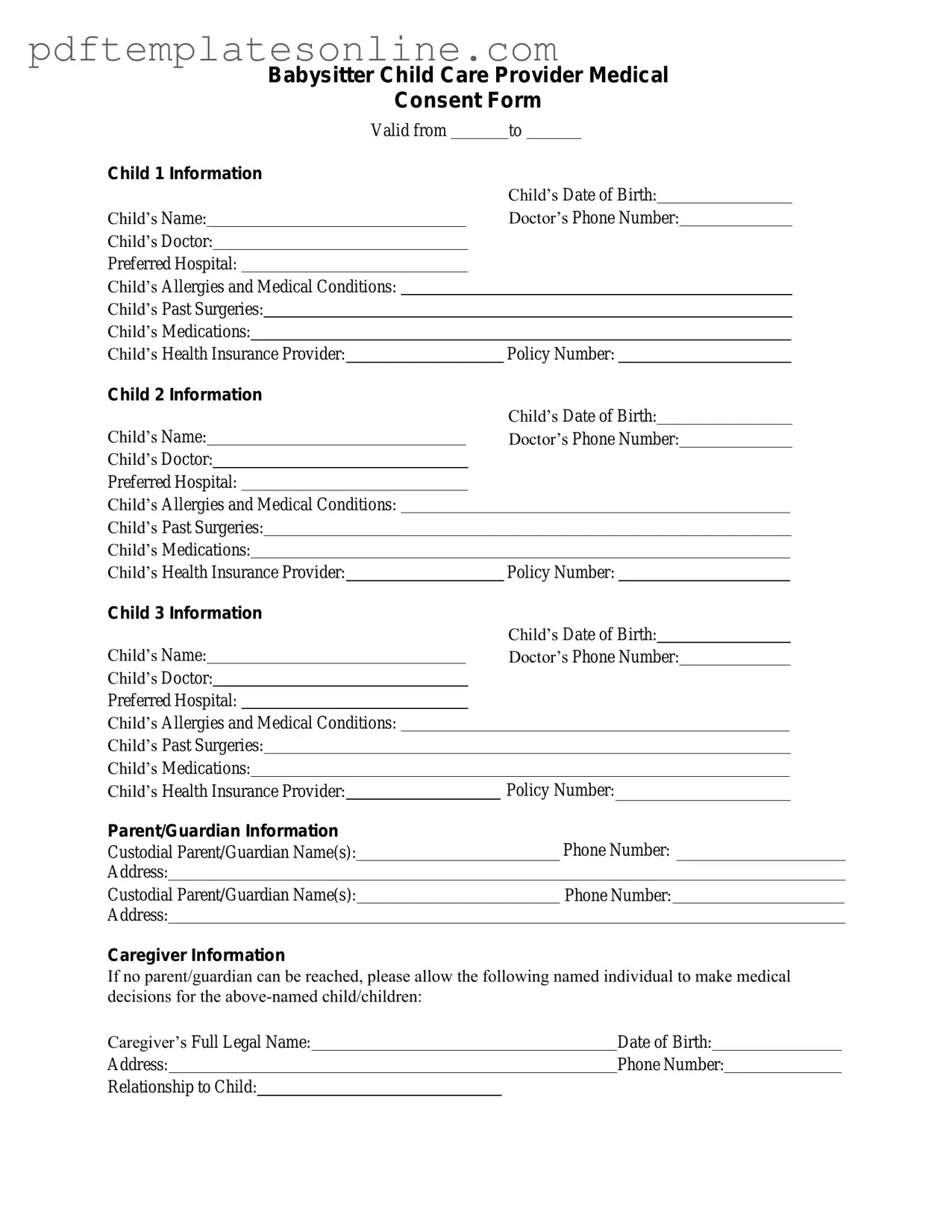Blank Medical Consent Babysitter Form
The Medical Consent Babysitter form is a crucial document that allows caregivers to make informed medical decisions for children in the absence of their parents or guardians. This form collects essential information about the child's health history, allergies, and emergency contacts, ensuring that caregivers are prepared to act swiftly in case of a medical emergency. By completing this form, parents can provide peace of mind, knowing that their children will receive appropriate care when needed.
Access Medical Consent Babysitter Editor Now
